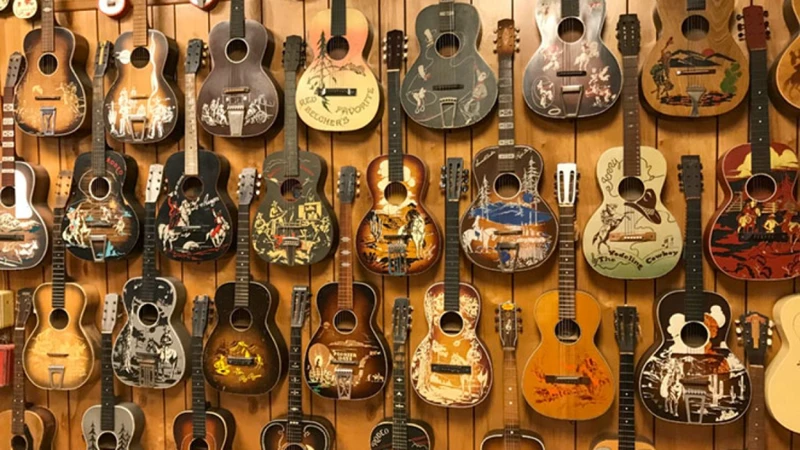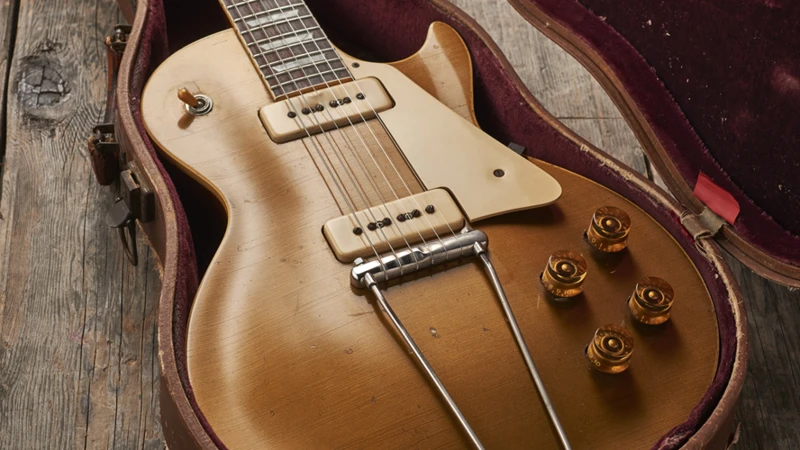Signature guitar designs are an essential part of a country music artist’s image and identity. These custom-made instruments not only serve as tools for creating music but also as symbols of the artist’s unique style and personality. In this blog post, we will explore the significance of signature guitar designs for country music artists and delve into some iconic examples that have left a lasting impact on the genre.
History of Signature Guitar Designs
Signature guitar designs have been around for decades, with some of the earliest models dating back to the 1950s and 1960s. These custom instruments were initially created to meet the specific needs and preferences of individual artists, offering them a personalized tool for expressing their musical vision.
One of the first country music artists to have a signature guitar design was Chet Atkins, known as “Mr. Guitar.” His collaboration with Gretsch resulted in the creation of the Gretsch 6120, a hollow-body electric guitar that became synonymous with Atkins’ smooth country sound.
Since then, signature guitar designs have become a common feature in the music industry, with artists from various genres partnering with guitar manufacturers to develop instruments that reflect their unique playing style and aesthetic.
Iconic Signature Guitar Designs in Country Music
1. Fender Telecaster – Brad Paisley
Brad Paisley is one of the most recognizable country music artists, known for his virtuosic guitar playing and distinctive tone. His signature Fender Telecaster features a custom silver sparkle finish and a unique paisley-patterned pickguard, paying homage to his surname.
The Brad Paisley Telecaster is equipped with custom pickups that deliver the twangy, articulate sound that Paisley is famous for. The guitar’s sleek design and versatile tone make it a popular choice among country guitarists looking to capture Paisley’s signature sound.
2. Gibson J-200 – Emmylou Harris
Emmylou Harris is a legendary country music artist known for her ethereal vocals and emotive songwriting. Her signature Gibson J-200 acoustic guitar is a true classic, featuring ornate inlay work and a warm, resonant tone.
The Gibson J-200 is a favorite among country and folk musicians for its rich, full-bodied sound and stunning visual appeal. Harris’ signature model pays tribute to her timeless artistry and enduring influence on the genre.
3. Martin HD-28 – Chris Stapleton
Chris Stapleton is a modern powerhouse in country music, with a soulful voice and raw, blues-infused sound. His signature Martin HD-28 acoustic guitar is a workhorse instrument that reflects Stapleton’s no-frills approach to music.
The Martin HD-28 is known for its powerful projection and balanced tone, making it ideal for both strumming and fingerstyle playing. Stapleton’s signature model captures the essence of his rugged, rootsy style and has become a staple in his live performances and recordings.
The Impact of Signature Guitar Designs
Signature guitar designs play a crucial role in shaping an artist’s identity and connecting them with their audience. These custom instruments not only serve as tools for creating music but also as symbols of artistic expression and creativity.
For country music artists, in particular, signature guitar designs are a way to showcase their unique playing style and sound. Whether it’s a custom finish, unique inlay work, or special electronics, these signature models help artists stand out in a crowded industry and leave a lasting impression on fans.
Choosing a Signature Guitar Design
When selecting a signature guitar design, country music artists must consider factors such as playability, tone, and aesthetics. It’s essential to choose a guitar that not only sounds great but also feels comfortable to play and reflects the artist’s personal style.
Collaborating with a reputable guitar manufacturer can help artists bring their vision to life and create a custom instrument that meets their specific needs and preferences. Whether it’s a flashy electric guitar or a vintage acoustic model, the right signature design can elevate an artist’s performance and inspire creativity.
Future Trends in Signature Guitar Designs
As technology continues to advance, we can expect to see innovative new features and designs in signature guitars for country music artists. From cutting-edge electronics to sustainable materials, the possibilities are endless for creating custom instruments that push the boundaries of traditional guitar design.
Additionally, we may see more collaborations between artists and guitar manufacturers, resulting in limited-edition signature models that appeal to collectors and fans alike. These special instruments not only represent the artist’s legacy but also serve as a tangible connection between the musician and their audience.
Looking to perfect your acoustic guitar techniques for classic country music or country bands? Interested in different acoustic guitar body styles for country music or the right tuning for playing country songs? Explore our articles on acoustic guitar techniques for classic country music, acoustic guitar techniques for country bands, acoustic guitar body styles for country music, tuning your guitar for country music, and electric guitar tips for country music to enhance your skills as a country music artist!
Conclusion
Signature guitar designs are a vital aspect of a country music artist’s career, offering them a unique platform for self-expression and creativity. From classic acoustic models to custom electric guitars, these custom instruments play a significant role in shaping an artist’s identity and connecting them with their fans.
By choosing a signature guitar design that reflects their musical style and personality, country music artists can make a lasting impact on the industry and leave a legacy that resonates for years to come.



